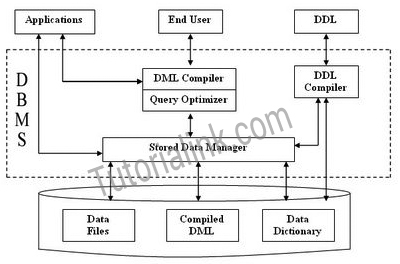
The components of DBMS can be divided into two parts:
Interprets DDL statements into a set of tables containing metadata.
Translates DML statements into low level instructions that the query evaluation engine understands.
Converts DML statements embedded in an application program into procedure calls int he host language.
Executes low level instructions generated by DML compiler.
Checks the authority of users to access data.
Checks for the satisfaction of the integrity constraints.
Preserves atomicity and controls concurrency.
Manages allocation of splace on disk.
Ask Question